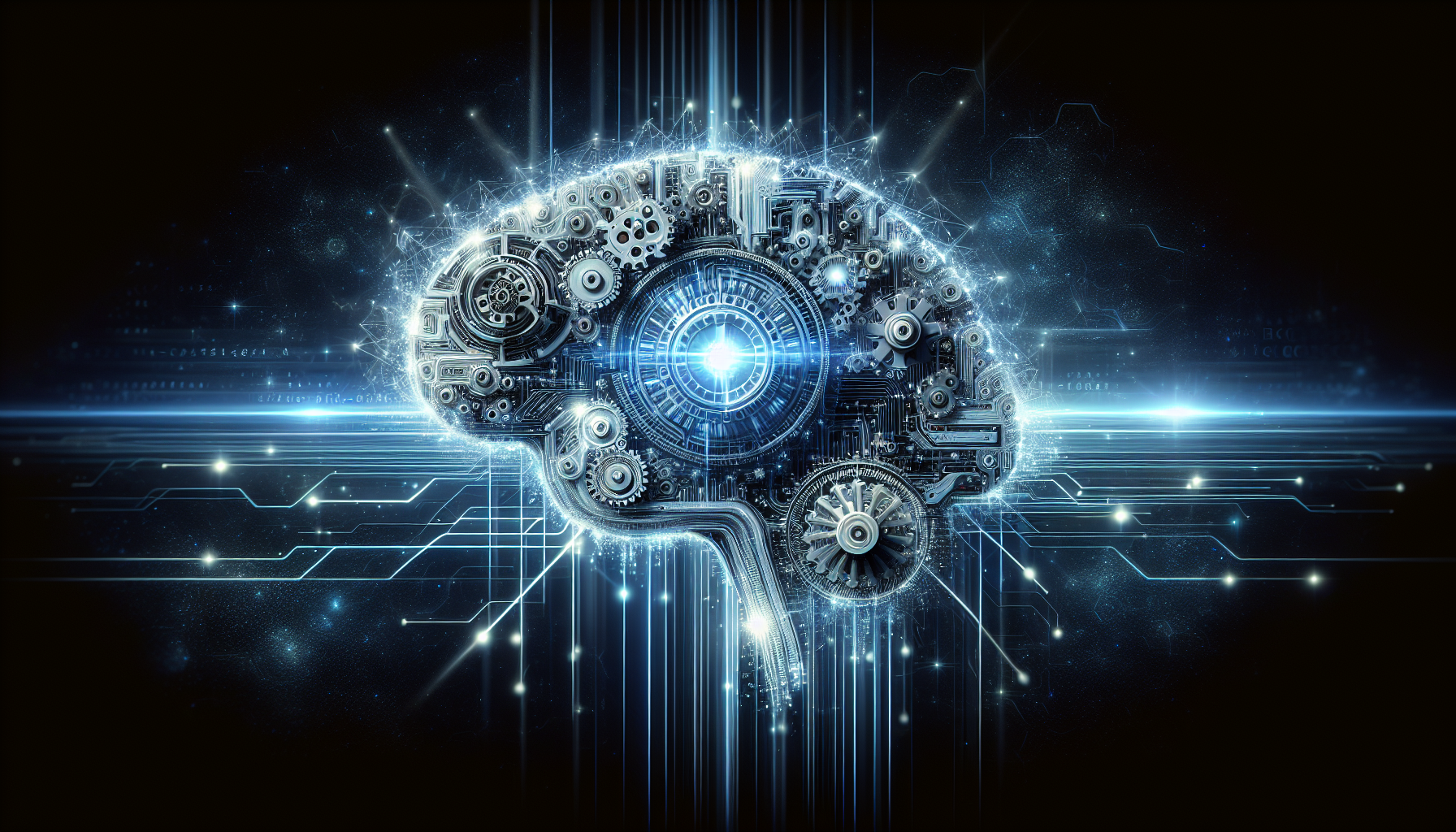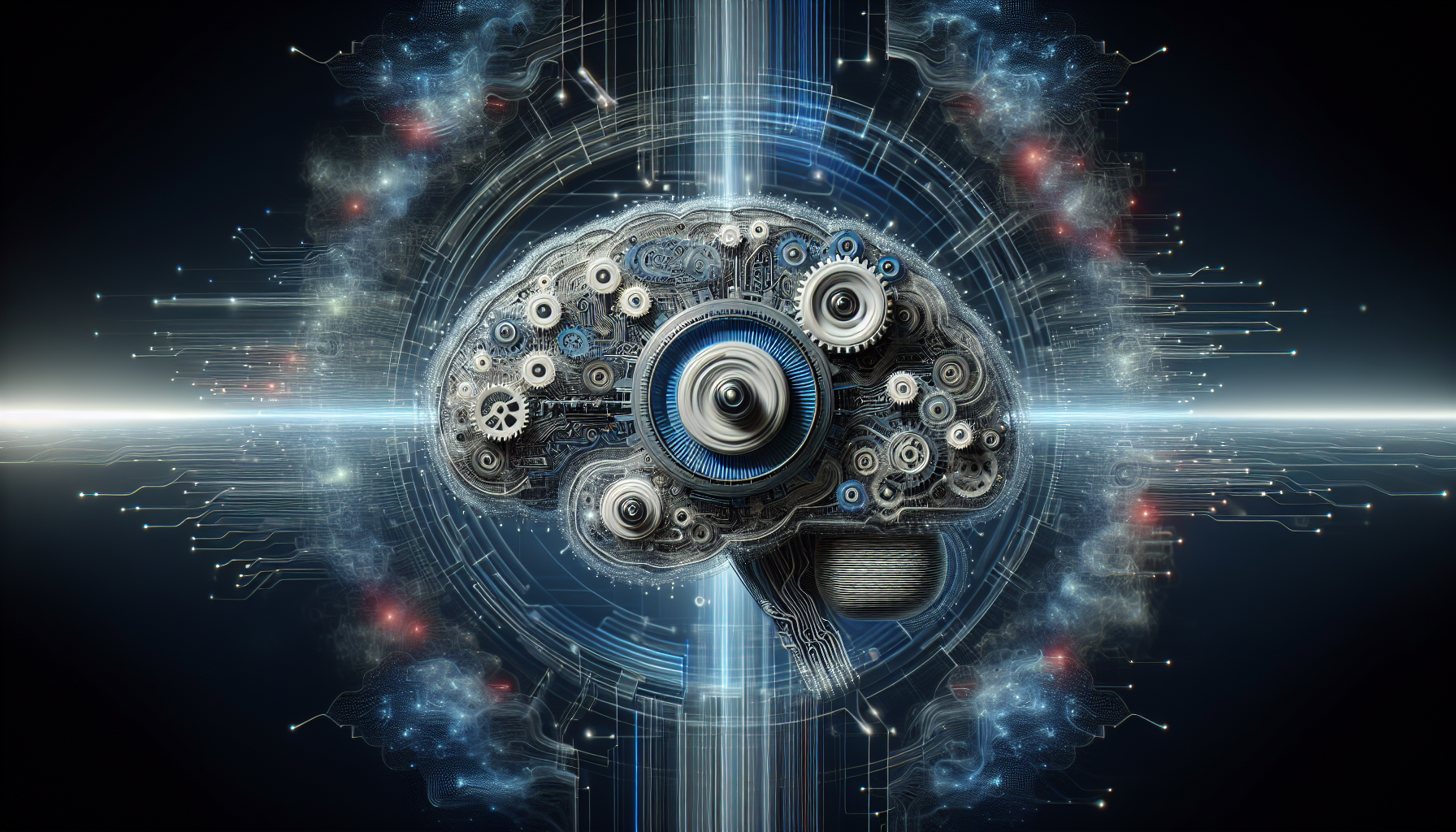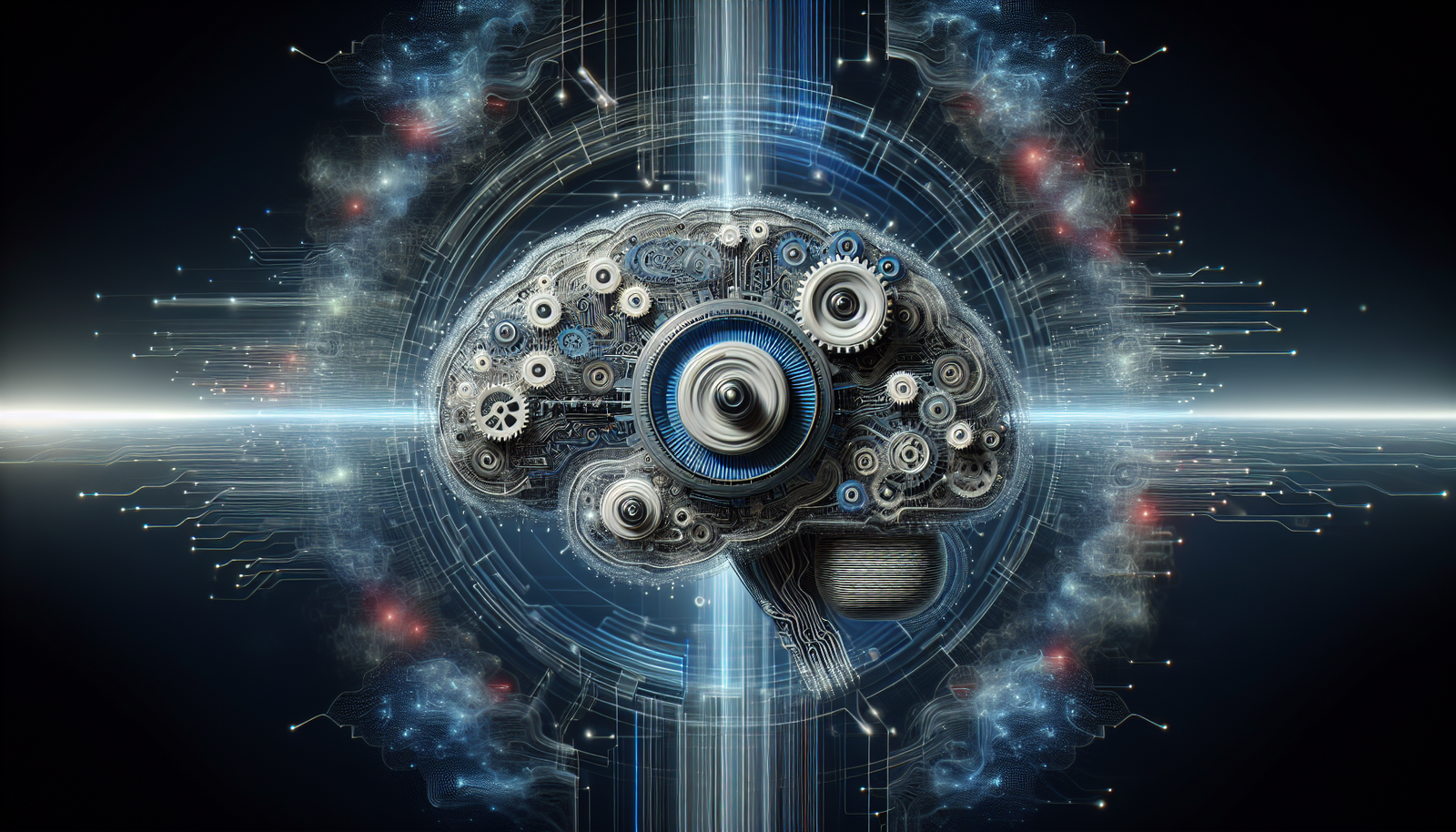You’re about to embark on a journey comparing two remarkable autonomous AI agents: RooCode and Manus. Guided by the insights of Julian Goldie SEO, this article showcases the fascinating capabilities of these innovative technologies. You’ll gain a deeper understanding of their roles and the unique features that make each of them stand out in the AI landscape.
As you explore the details, you’ll discover why these AI agents are considered trailblazers in their field. Julian Goldie’s expertise offers a comprehensive overview, making this a worthwhile read for anyone intrigued by the potential of autonomous AI. Whether you’re an enthusiast or a professional, get ready to expand your knowledge and perhaps, even your toolkit.
Understanding Autonomous AI Agents
Definition and characteristics of autonomous AI
You’re living in a fascinating era where technology is advancing faster than ever. Autonomous AI agents are like the superstars of this technological revolution. Picture an AI that can operate independently without constant human input. That’s what makes them “autonomous.” These agents are designed to analyze data, learn from their environments, and make decisions—all on their own. Imagine having an army of little robots working round the clock to make life easier for you, without needing you to babysit them constantly.
Autonomous AI is characterized by its ability to adapt, learn, and evolve over time. They can handle complex tasks by merging behavioral economics, algorithm development, and vast data analysis. They’re sort of like your super efficient personal assistants that never sleep and are always brainstorming ways to be more effective and efficient.
Historical perspective on AI development
Taking a step back in time to understand the journey of AI is like leafing through a riveting history book filled with twists, turns, and tantalizing possibilities. The concept of artificial intelligence dates back to ancient myths about mechanical men. Fast forward to the 1950s, when computer scientists like Alan Turing began exploring the potential of machines to think. Since then, AI has experienced several cycles of boom and bust, often referred to as “AI winters and summers.”
The significant advances in machine learning in the 2000s relaunched AI into the spotlight. Back then, the idea of an AI agent that could set its own tasks and complete them autonomously seemed like science fiction. Yet here we are, where the wildest dreams of early pioneers now look quaint compared to the realities of functioning autonomous AI today.
Key technologies driving autonomy in AI
How are these miraculous autonomous AI systems made possible? Well, a mix of cutting-edge technologies is at work here. Machine learning and neural networks lie at the heart of these innovations, allowing AI to mimic human decision-making processes. Deep learning algorithms halt the need for explicit programming, enabling systems to learn from vast datasets.
Then there’s natural language processing (NLP), which allows machines to understand, interpret, and respond to human language. Combine these with innovations in robotics and sensor technologies, and you have AI systems that don’t just follow instructions—they anticipate what might be needed next, kind of like a hyper-intuitive barista who starts your latte as you walk through the door.
Introduction to RooCode
What is RooCode?
So, what exactly is RooCode? Picture a magical toolkit for developers, both novices and experts, to seamlessly create, manage, and deploy AI applications. RooCode is like your tech-savvy friend who’s also endlessly patient and ready to help you knock coding challenges out of the park. This platform provides developers with a multitude of resources and tools designed to streamline the coding process, enabling them to achieve more with less hassle.
Core features and functionalities
RooCode boasts an array of features that make it a darling among developers. These features include intuitive interfaces for prototype-building, pre-coded modules for common functions, and sophisticated AI integration capabilities. Whether you are creating a simple application or a complex AI solution, RooCode is equipped to simplify and accelerate your journey from concept to deployment. One of its coolest features is its capacity to facilitate collaboration, turning coding into a social, engaging experience rather than a solitary one in a dark basement.
Target audience and use cases for RooCode
RooCode is perfect for a wide range of individuals, from eager students dipping their toes into the sea of coding for the first time to seasoned developers seeking efficient solutions to complex programming challenges. It’s tailor-made for anyone needing to whip up AI applications quickly and effectively without having to reinvent the wheel each time. Whether you’re working on fintech applications, healthcare solutions, or the latest mobile game, RooCode is like the Swiss Army knife in your digital toolkit, ready to solve a multitude of coding puzzles.

Introduction to Manus
Overview of Manus AI
Now, let’s dive into Manus AI, another fascinating player in the autonomous AI game. If RooCode is the adaptable Swiss Army knife, think of Manus as the seasoned tactician whose strength lies in strategy and insights. Manus AI is an advanced system that specializes in transforming vast amounts of data into actionable insights. It’s essentially like having a hyper-intelligent business consultant that never gets tired, delivering data-driven strategies and predictions right when you need them.
Distinctive features of Manus
Manus stands out with its specialized focus on intelligent data processing and strategic insight generation. Its hallmark features include powerful data analytics tools, predictive modeling capabilities, and real-time decision-making processes. Imagine having an AI that can analyze ongoing trends in your industry and predict future movements—Manus does just that. Plus, its ability to integrate with existing systems means you don’t have to overhaul your current infrastructure to reap its benefits.
Application areas and industries served by Manus
Manus shines brightest in sectors where data is abundant and insights are invaluable, like finance, retail, healthcare, and logistics. Its predictive modeling capabilities are particularly beneficial for businesses looking to anticipate market trends or detect fraudulent activities. Manus is the Sherlock Holmes of the data world, piecing together disparate clues to unveil a clear picture of what lies ahead.
Comparison of RooCode and Manus AI
Similarities between the two AI systems
You might be wondering, “Do these systems share any common ground?” Indeed, both RooCode and Manus AI sit comfortably under the broad umbrella of autonomous AI agents, sharing the goal of enhancing efficiency and productivity. Both provide user-friendly interfaces designed to calmly guide you through complex tasks. Intelligence and learning capabilities are at their core, equipping them to deal with diverse challenges across various sectors.
Key differences: strengths and weaknesses
Despite their shared mission, these platforms have different strengths and weaknesses. RooCode excels in coding and development environments, streamlining the process of building AI applications. Its strength lies in accessibility for developers and the ease with which applications can be developed and deployed. On the other hand, Manus AI specializes in data-driven insights, leveraging its processing prowess to foresee market trends and inform strategic decisions.
While RooCode optimizes the coding journey, Manus focuses on the journey of making sense of data. RooCode’s might be found lacking in the deep, complex data analysis where Manus essentially thrives.
User feedback and market reception
Both RooCode and Manus have received positive responses from users and industry experts, but for different reasons. RooCode is praised for making the coding process much more manageable and less daunting for developers. Manus, meanwhile, is lauded for its analytical capabilities and its transformative impact on decision-making processes. In the competitive AI market, both have carved out niches where they excel and deliver value to users.

Julian Goldie SEO’s Perspective on Autonomous AI
Julian Goldie’s background in SEO and AI
Ah, Julian Goldie, a connoisseur of digital marketing and a walking encyclopedia on SEO paired with AI insights. His background in SEO is rich, with years of exploring how search engines work and how to make content stand out in the bustling digital marketplace. He’s been like the Gandalf of SEO, guiding businesses through the labyrinth of search engine algorithms with the light of AI knowledge.
His views on the impact of AI on digital marketing
Julian Goldie believes AI has reshaped digital marketing in ways we once only imagined. From predicting customer behavior to personalizing user experiences, AI tools have become indispensable for marketers. He argues that AI doesn’t just enhance digital marketing; it transforms it, opening doors to innovative strategies that drive engagement and conversion rates to new heights.
Insights and predictions for future AI developments
Looking ahead, Julian predicts that AI will continue to evolve and integrate further into all areas of digital marketing. He sees a future where AI not only personalizes content but also anticipates consumer desires before they even know them. Julian emphasizes the idea that businesses embracing AI are like sailors skillfully navigating the winds of change—those who understand and utilize this technology will secure a firm foothold in the future market landscapes.
Role of AI in Search Engine Optimization
How AI transforms SEO strategies
SEO strategies have undergone a metamorphosis with the advent of AI. Instead of stabbing in the dark, hoping to appeal to the ever-changing algorithms of search engines, AI provides data-driven insights that highlight what actually works. It’s almost like having a cheat sheet that allows digital marketers to optimize their content for maximum impact. AI helps in refining keywords, enhancing content quality, and even predicting emerging trends that can lead to higher rankings.
Automating tedious SEO tasks with AI
With AI, those monotonous, time-consuming SEO tasks are now as outdated as dial-up internet. AI tools automate keyword research, link-building, and performance analysis, freeing up your time for creative and strategic endeavors instead of endless admin work. It’s like having a diligent little employee tidying up behind the scenes so you can focus on the bigger picture.
Case studies demonstrating AI’s effectiveness in SEO
There are numerous success stories where AI has led to dramatically improved SEO outcomes. One company increased its website traffic by 47% after implementing an AI-powered content strategy, while another saw a leap in customer engagement through personalized AI-driven recommendations. These case studies highlight AI’s potential to transform SEO from a laborious process into a streamlined, data-informed art.

The AI Profit Boardroom Concept
Overview of the AI Profit Boardroom
Imagine a place where innovators, entrepreneurs, and AI enthusiasts congregate to share ideas, strategies, and insights—the AI Profit Boardroom is just that. It’s like the ultimate think tank, except powered by caffeine and cookies rather than corporate jargon. This hub of exchange focuses on maximizing the profitability and effectiveness of AI applications across industries.
Benefits of participating in the AI Profit Boardroom
Being a part of the AI Profit Boardroom provides numerous advantages. Participants gain access to a network of AI experts, practical insights into cutting-edge AI strategies, and collaborative opportunities to innovate new solutions. Imagine being thrust into a community where the exchange of ideas flows as freely as a Starbucks app on double espresso day.
How it fosters AI innovation and collaboration
The Boardroom fosters innovation by creating an environment where ideas can collide and merge, leading to explosive new concepts and strategies. Participants are encouraged to bring their unique perspectives to the table, facilitating a collaborative atmosphere where everyone learns and grows. It’s like a melting pot of inspiration, supercharging the field of AI relentlessly.
Standard Operating Procedures (SOP) in AI
Importance of SOP in utilizing AI effectively
Standard Operating Procedures (SOPs) are like the north stars guiding the proper use of AI tools. They help users navigate the careful balance between tech potential and practical utility, ensuring that AI is used effectively and ethically. Without SOPs, leveraging AI would be akin to wandering through an unfamiliar city without a map—possible, yes, but much more complicated and risky.
Examples of SOPs in AI applications
Imagine creating a blueprint for AI implementation in healthcare, where explicit guidelines outline the operation, management, and response protocols for AI systems diagnosing patients or managing data. In finance, SOPs might cover risk assessment models and compliance checks, ensuring both efficiency and adherence to regulations.
How to create effective SOPs for AI tools
Designing effective SOPs begins with understanding the goals and constraints of your AI applications. This means determining clear objectives, identifying resources, engaging stakeholders, and continuously revising procedures based on feedback and technical advancements. It’s about creating a flexible framework that evolves with technology and user needs, ensuring that AI remains an ally and not an unpredictable rogue.
Emerging Trends in Autonomous AI
New developments in AI technology
The world of AI is as bustling as a cityscape in peak rush hour, with new developments emerging continuously. Innovations in quantum computing, advancements in natural language processing, and the rise of AI ethics are reshaping the landscape. The excitement around AI is palpable, fueling curiosity and creativity as new possibilities come into view.
Future of autonomous AI in various industries
The future of autonomous AI in industries like transportation, healthcare, and customer service looks incredibly promising. Cars that drive themselves efficiently, doctors aided by AI diagnoses that minimize human errors, and customer service agents enhanced with AI-driven empathy—all seem to blur the line between the possible and the imagined. With each leap forward, autonomous AI is reshaping industries and creating new types of work and interaction.
Potential challenges and opportunities
Yet, as with any technological advance, challenges accompany opportunities. Ethical considerations, data privacy, and the risk of biases in AI decision-making are areas of significant concern. However, these challenges are inseparable companions of progress that encourage critical reflection and innovation. They remind us of the importance of developing AI technologies responsibly, with a vigilant eye on the social impacts they cause.
Conclusion
Recap of key insights about RooCode and Manus
Reflecting on RooCode and Manus, it’s clear that both represent cutting-edge approaches to autonomous AI, albeit in distinct fields. RooCode stands out in facilitating app development and collaboration among coders, making coding a more accessible and engaging endeavor. Conversely, Manus excels in data analysis and strategic insight, playing an indispensable role in decision-making processes across various industries.
Final thoughts on the role of AI in digital marketing
The transformative power of AI in digital marketing is undeniable. By offering profound insights, personalizing interactions, and automating labor-intensive tasks, AI unleashes creativity and innovation while improving efficiency. As marketers leverage AI to engage and convert users in the ever-evolving digital landscape, they achieve more than ever before, setting new standards for success.
The future outlook for autonomous AI
As autonomous AI continues to evolve, it’s destined to redefine the boundaries of what technology can achieve. The potential for innovation is boundless, paving the way for advances that solve longstanding global challenges and enhance daily life. However, we must approach this promising horizon with both enthusiasm and caution, ensuring the technology serves humanity’s best interests while remaining vigilant of the challenges it presents. With autonomous AI, the future may very well challenge our imaginations beyond what we have yet dared to dream.

